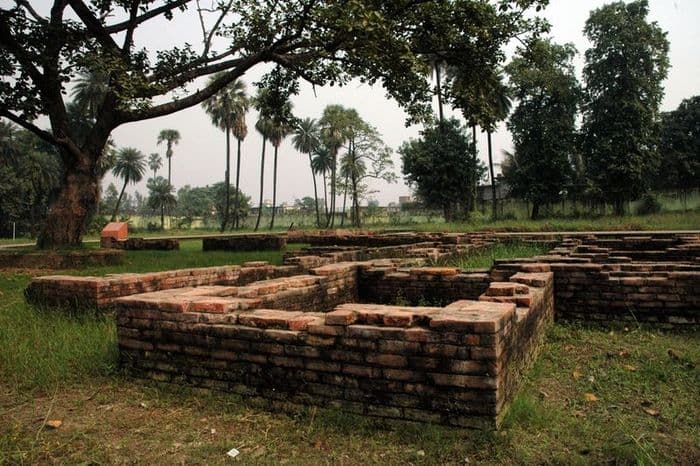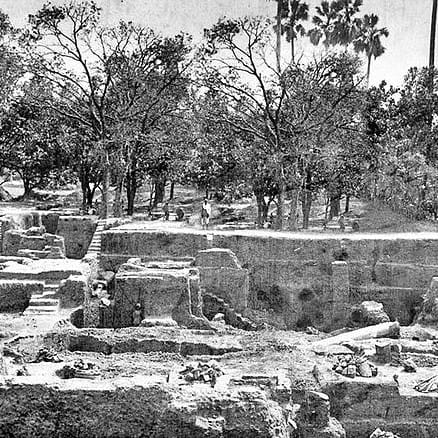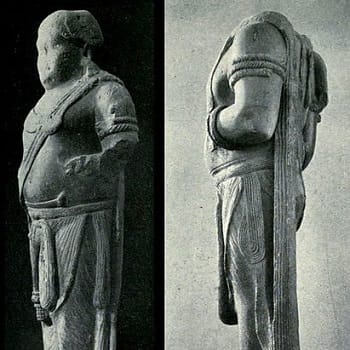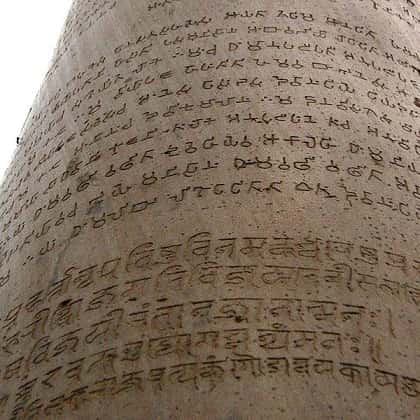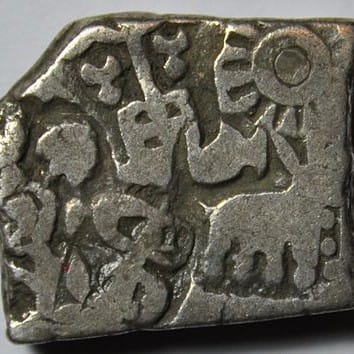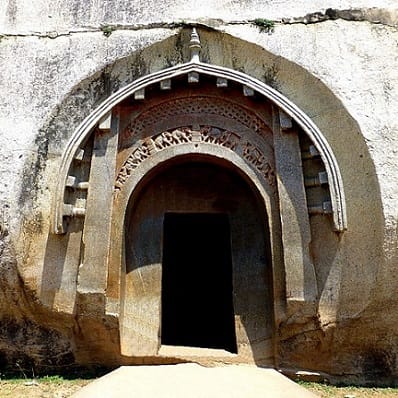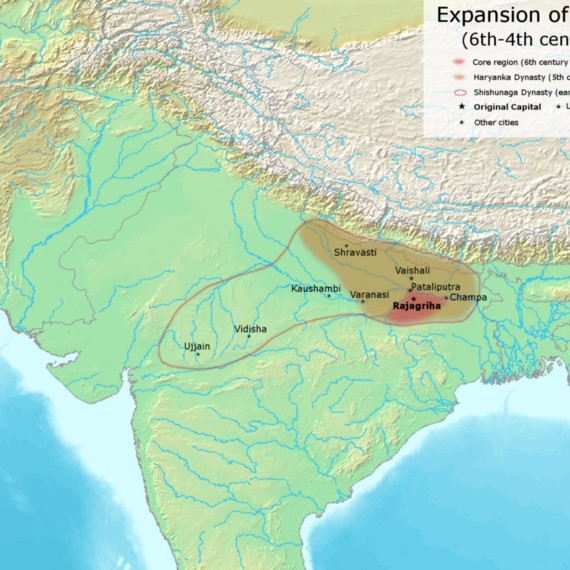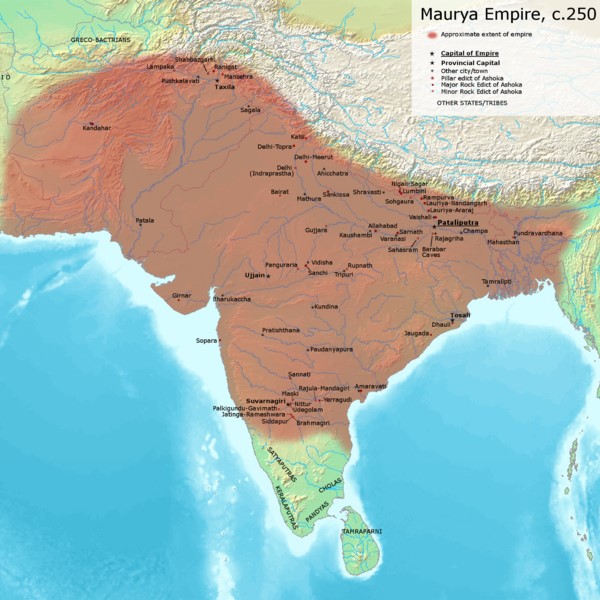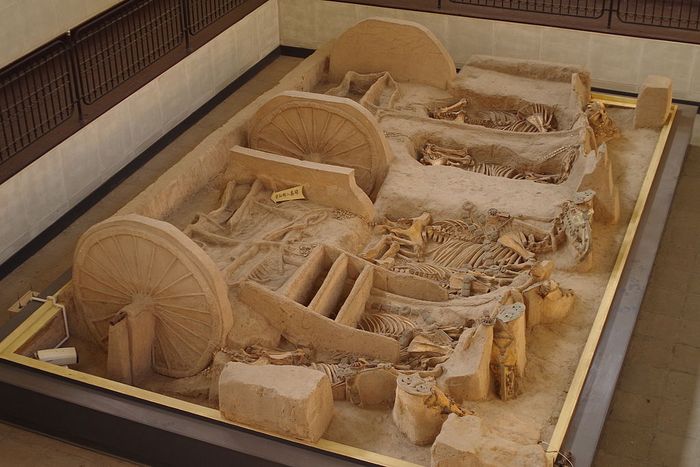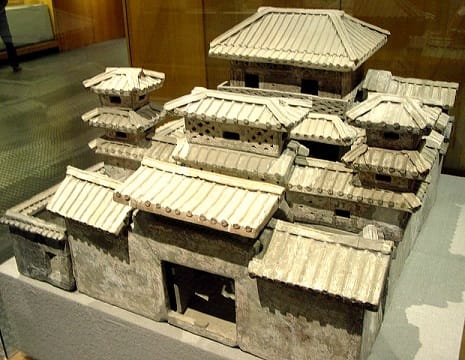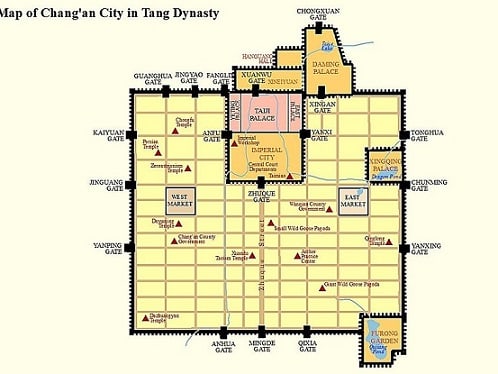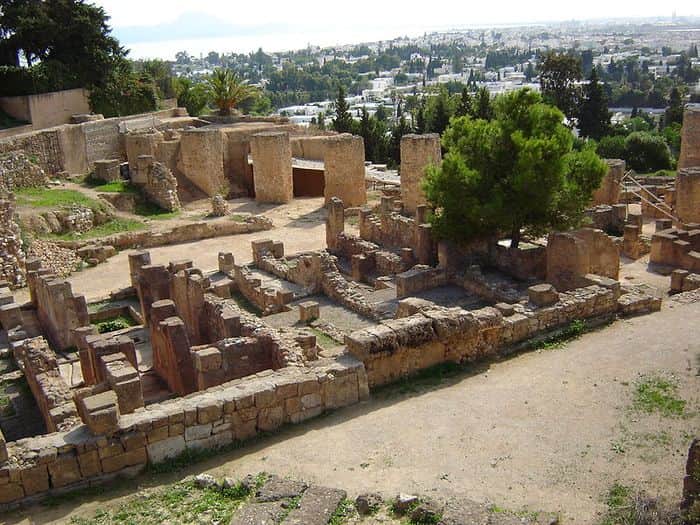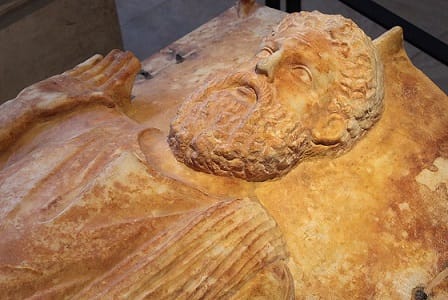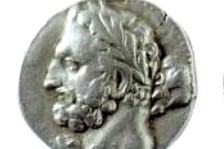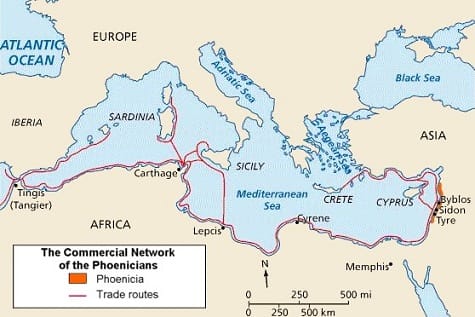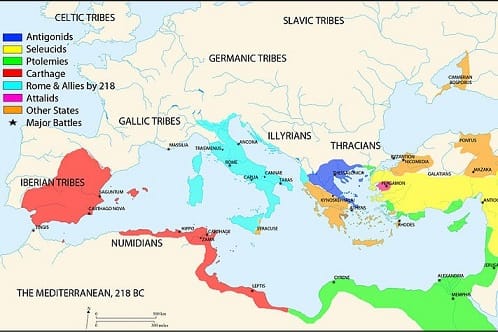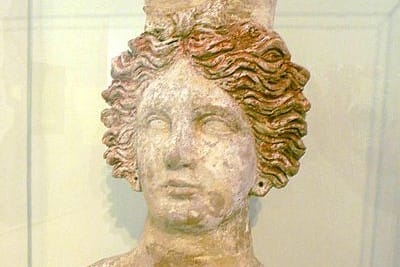By the first millennium BC (1000-1 BC), some cities had turned into megacities. Some even had one million inhabitants. These cities had magnificent public buildings, roads, gardens, and entertainment arenas. Some even had shopping malls, law enforcement, and running water.
These were the 6 largest -and most splendid- cities during the first millennium BC.
(To find out which were the biggest cities during the second millennium BC (2000 and 1001 BC), go here.)
*The estimates used here are the work of Professor Georges Modelski and historian Tertius Chandler.
6. Xiadu, China
320,000 inhabitants in 400 BC

A the time, China was divided into small kingdoms that fought each other.
One of those kingdoms was Yan. And Yan had Xiadu, our contestant city, as its capital.
.
Strong defenses for troubled times
.
Thanks to its location, Xiadu was easy to defend. It rose on the Taihang Mountains and was flanked by two rivers: Beiyi and Zhonghyi.
Since times were tough, it also had two defensive walls and a moat. Archaeologists found one of the walls. At its thickest, it is 40 m wide (131 ft), and at its highest, it is 6.8 m high (22 ft).
But those were the outer walls. Inside the city, there were two more walls. One crossed the squared-plan city dividing it into two halves (eastern and western).
The other wall protected the royal palace and separated the royals from their subjects.
Xiadu’s layout

Xiadu was divided into neighborhoods. The eastern side of the city housed large workshops. There, the metalworkers cast iron and bronze, minted coins, and made weapons. While the artisans created pottery and porcelains.
Apparently, most of those objects were traded in the markets of northern China. They would have been sold to the nomads.
Yet, Xiadu had its own market, where at least some of those objects would have been traded. Scholars believe that, like in most Chinese cities at the time, Xiadu’s market was controlled by the state.
In the same eastern side of the city which had the workshops, where the governmental buildings. There were the palace, the government offices with all their records, and two royal cemeteries.
Xiadu, also called Yanxiadu, had a network of roads that connected it to the smaller cities of the region.
And this big city had 320,000 inhabitants in 400 BC. That is a lot bigger than plenty of modern cities.
5. Pataliputra, India
350,000 inhabitants in 206 BC
Back in the day, a Greek ambassador described Pataliputra as the greatest city in India. According to him, Pataliputra’s palaces outshone the luxurious palaces of Persia. And that says a lot because Greeks were mesmerized by Persia’s palaces.
Pataliputra’s temples, palaces, and parks
Big gardens surrounded the palaces. These beautiful gardens had ponds, trees, birds, and fishes.
The city had large civic buildings such as halls and temples. And it, too, had parks.
And a big defensive wall encircled Pataliputra. The wall had a ditch, 570 towers, and 64 gates.
Pataliputra’s government
A king ruled this city.
And he was assisted by commissions made up of 5 men. The commissions were in charge of public works, commerce, tax collection, and trade.
The visiting Greek ambassador who was in awe of the city, Megasthenes, estimated the city had 400,000 inhabitants in 304 BC. Modern scholars have been more conservative. They calculate it reached 350,000 only a century later.
From fort to capital
Pataliputra began as a fort. It was founded by King Ajatashatru of Magadha in 490 BC. Two rivers flanked the fort.
Due to its location, Pataliputra grew rapidly. So much so that in the next generation, the king’s son made it the capital of Magadha.
At the time, India was divided into several kingdoms. Later, in the 300s BC, Alexander the Great conquered some of the western territories and incorporated them into his empire.
As soon as Alexander died (323 BC), a man named Chandragupta expelled the Greeks from India.
He may not have wanted Alexander’s men in his territory, but he was inspired by Alexander’s dream of a unified land. So Chandragupta conquered and united all of India. And he successfully established the Mauryan Empire.
Chandragupta made Pataliputra the capital of his empire. It would remain so for 300 years, until 73 BC.
The city has been continuously inhabited, and it is called Patna nowadays.
4. Chang’an, China
400,000 inhabitants in 200 BC
The site has been inhabited for millennia. Even rests of Homo Erectus have been found there.
But Chang’an’s fame begins in more recent times.
It was already a prominent city during the Shang dynasty (c. 1600-1046 BC). And the following rulers, the Western Zhou (1046 -771 BC), made Chang’an their capital.
The blessings of the Silk Road
Centuries later, in 206 BC, Chang’an became the capital again, this time under the Han dynasty.
And it is then when it reached its peak. As the Han decided to trade with the West and opened the Silk Road -the trading route that connected Asia, Africa, and Europe.
At one of the ends of the Silk Road was Chang’an. So the city was the most international place in the Han Empire. It received traders from all over the world.
In 200 BC, Chang’an had 400,000 inhabitants. It probably was the largest city the world had at the time.
Chang’an means perpetual peace
Chang’an, which means “perpetual peace,” is located in a fertile valley. High mountains surround the city, and the Yellow and Wei rivers are nearby.
It occupied 450 hectares (1,110 acres).
Chang’an had high defending walls. Trees lined its avenues. And it had monumental buildings like temples, mausoleums, and at least 5 palaces. It also had parks, markets, and an armory.
One of the parks, Shanglin, had statues, ponds, fountains, exotic plants and animals, such as rhinoceros.
The city also had what was a rarity in ancient times: its own police force.
A total of 10 Chinese dynasties had Chang’an as their capital.
Chang’an has been continuously inhabited. It goes by the name of Xian nowadays.
3. Carthage, Tunisia
500,000 inhabitants in 300 BC
According to the legend, Carthage was founded by Dido, a fleeing queen.
Dido’s father was the king of Tyre. When he died, Dido inherited the throne along with her brother Pygmalion. But Pygmalion did not want to share the throne. To send a message, he killed Dido’s husband. Now, the queen feared for her life. So she fled Tyre with a group of loyal Phoenicians.
The group sailed across the Mediterranean and landed in North Africa. There, they founded Carthage in 814 BC.
The founding of Carthage, the facts
Perhaps the story was embellished by the ancients. Nonetheless, Carthage was indeed founded by Phoenicians from Tyre (modern Lebanon).
At the time, Tyre was a powerful city-state. And it already had colonies in the Mediterranean -in Spain and North Africa (Utica). So for the Phoenicians, founding a new town in foreign lands was not unusual.
The earliest settlements found in Carthage date from 760 BC. That is quite close to the legendary founding date.
Carthage was built for commerce
Phoenicians were renowned traders. They picked the site of Carthage well: in the middle of the trading routes of the Mediterranean. Commerce was sure to bloom.
They built the city on top of a defensible hill, right next to a lake and the sea. Their harbor could dock 220 ships.
By the sixth century BC, Carthage was a trading empire.
On top of that, it had silver mines in North Africa and Spain and taxed everyone in their territories.
So soon, they became the wealthiest city in the Mediterranean and one of the largest cities in the world.
Tyre’s downfall is Carthage’s gain
In 332 BC, Alexander the Great destroyed Tyre, captured the population and sold them into slavery.
Tyre had been the most powerful city in the Mediterranean. After its fall, the title went to Carthage.
By 300 BC, Carthage had half a million inhabitants.
The African city now occupied some 30 hectares. It had a residential area, public spaces, and markets.
The city’s political system was complex. Carthaginians elected two leaders/kings. And they had a senate, an assembly, and several commissions.
Carthage vs Rome
As Carthage expanded, it established its own colonies throughout the Mediterranean. And, fatefully, intervened in a conflict on the nearby island of Sicily.
The problem was that Rome, which by then was less powerful than -and quite afraid of- Carthage, also chose to intervene in Sicily. The Punic Wars broke out (264 BC).
The conflict ended a century later, in 146 BC, when Rome razed Carthage to the ground.
2. Rome, Italy
800,000 inhabitants in 1 BC
This famous city also has a founding myth.
According to the legend, twins Romulus and Remus founded the city on the Palatine Hill. That happened in April 753 BC. Then, Romulus killed his brother and became the sole ruler of the settlement that became Rome.
Archaeologists confirm that Rome’s earliest settlement dates to the 8th century. And that, indeed, it stood on the Palatine Hill.
Location, location, location
One of the reasons for Rome’s extraordinary growth is that it is in a privileged location. It stands a bit inland, next to the Tiber River, which flows to the Mediterranean. So Rome has access to the sea but is protected from maritime attacks.
To the other side, to the east, the city is shielded from enemies by a mountain range. And on top of its defensive blessings, Rome’s land is fertile.
Politics: a Roman specialty
Rome was a monarchy until 509 BC, then, it became a Republic. After their experience with tyrannical kings, Roman’s were wary of one single man holding too much power. So the Republic was led by two men at a time, two consuls, who were elected and remained in office for only one year.
Other public officials were also elected every year. They were in charge of things such as the maintenance of public buildings, the finances, and the games.
Every patrician (the descendants of the first settlers) was expected to run for office and improve the city.
Rome’s engineering and architectural feats
Romans are renowned for their engineering and architecture. They built aqueducts that brought water into their city.
And all that running water allowed them to have public toilets and baths.
The public bathhouses were large, magnificent buildings where the citizens went to exercise and bathe daily.
Romans built large basilicas, a type of building later adopted by the Christians, that served as courthouses.
The Latins erected theaters to watch plays, and amphitheaters for gladiatorial games. Rome even had shopping malls.
Their city was connected with other towns in Italy via wide paved avenues. The most famous of these roads was the Via Appia, built in the 4th century BC, and which still exists.
Romans were always keen on this kind of engineering feats. Even in the distant days of the kings (8th to 6th century BC). The kings built a port and drained Rome’s marshes with a pipe called the Cloaca Maxima, which also served as a sewage system. It still works.
On the newly drained lands, both kings and consuls built the Roman Forum.
The Forum was the heart of the city. It was a place for public gatherings, to hold trials and celebrate a general’s triumph in war. There too, political campaigning and elections took place. And in the forum, one made business deals and exchanged gossip.
As Rome expanded and conquered, wealth flowed into the city. So the victorious generals and the patricians commissioned buildings to adorn the city. They built temples and basilicas and filled Rome with beautiful statues.
The worst part of town, the best part of town
With all this wealth, Rome was a magnet for immigrants. And by 1 BC, it was overcrowded: it had 800,000 inhabitants.
Writers describe the poorer neighborhoods, like the Subura, as dark, narrow labyrinths. The apartment buildings there were so tall and built so close together that the sun did not make its way down to the street.
Rome’s streets were quite dangerous at night. The wealthy, who lived on the hills, moved around with bodyguards.
The most elegant part of town remained the Palatine Hill, the spot where the city began. The Palatine had mansions adorned with gardens and ponds. Our word ‘palace’ comes from the mansions on the Palatine.
Rome, a city of marble
Patrician Julius Caesar, who actually lived in the dangerous Subura, built a much-needed new forum (1st century BC).
After his murder, his grandnephew Octavius became the king of Rome in everything by name (27 BC). And he continued Caesar’s building program.
Octavian finished Caesar’s forum and built his own. He also built a basilica, a temple to Jupiter, and expanded the harbor, among other projects.
Octavian boasted that he found Rome a city of brick and left it a city of marble.
Read next: Was Julius Caesar handsome? His statues, coins, and ancient descriptions
or Here is What 15 of the Most Famous Romans Looked Like- from Octavian and Antony to Scipio
1. Alexandria, Egypt
1,000,000 inhabitants in 100 BC
Alexander the Great founded many cities. And, without any humbleness, gave his own name to most of them. But by far, the most famous city he founded is Alexandria in Egypt.
Alexander founds Alexandria
The Macedonian king ‘liberated’ Egypt in 332 BC from its Persian rulers. And he became the pharaoh.
The new pharaoh needed a port in the Mediterranean for his navy. So he founded a city, Alexandria, at a strategic place in the mouth of the Nile.
In 331 BC, the Macedonian king was on the spot he had chosen for Alexandria. He drew the plan of the city on the ground with barley powder: a rational layout with parallel streets. To his dismay, birds ate all the barley before he was finished. But the seers said it was a good sign, for it meant the city would feed people from all nations.
Ptolemy establishes a dynasty
After Alexander’s death, one of his best friends and generals, the Macedonian Ptolemy Lagos, became the head of Egypt. He first called himself a satrap, but by 305 BC, he had dropped all pretense and made himself king.
Ptolemy first tried to legitimize his power in Egypt by marrying Alexander’s sister, Cleopatra. But she was killed. So he married other highborn Macedonians and established the Ptolemaic dynasty.
The Ptolemaic dynasty ruled Egypt for three hundred years until 30 BC. That year, famous Queen Cleopatra, Ptolemy’s descendant, killed herself. And the Ptolemaic dynasty came to an end.
Alexandria, a place for knowledge
Alexandria became the capital of Egypt soon after its founding in 331 BC. Alexander had destroyed Tyre the year before. So Alexandria -along with Carthage- swept in to fill the void left by that important trading port.
By 300 BC, Alexandria had 300,000 inhabitants, as the Ptolemy actively promoted immigration from the Greek world. They wanted colonists to keep a possible native insurrection at bay. And they especially invited scholars, philosophers, historians, artists, and geographers to come to their court.
Soon, the city became renowned for its culture and science. It rivaled and surpassed Athens as a center of knowledge.
Ptolemy I even built what was to become the largest library in the world.
Other famous buildings were the lighthouse of Pharos, named one of the Seven Wonders of the World, and the Greco-Egyptian Temple of Serapis.
The royal palace occupied 1/3 of the city. Splendid public monuments, squares, a beautiful harbor, and the tomb of Alexander the Great were some of the other attractions of the capital.
Plus, in Egyptian fashion, there were plenty of festivals and processions throughout the year.
Read next: 10 Ancient Sports We Still Play
More Articles
